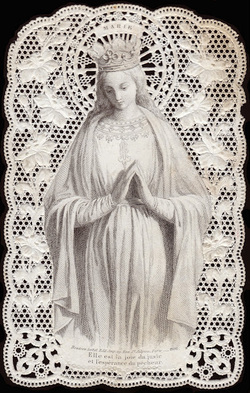
Every year for over fourteen centuries the town of Salency, France, has given to some girl the honor of being queen. Once every year some young lady is chosen as a model for the village because of her virtue. Our "queen for a day" programs on the radio are nothing new.
On a particular day the winner, the one chosen, is led to the church by the chief magistrate of the village to hear Mass. In the afternoon she is attended by twelve young girls dressed in white, and escorted by twelve young men of the neighborhood. The procession marches into church where a colorful ceremony is conducted. A crown is placed upon the head of this maiden chosen for her goodness. She is given a silver ring and a blue ribbon, which are souvenirs of King Louis XIII, who once took part in this annual festival.
Suppose that this contest were world-wide and history-wide. Suppose that from all the young women of all times and all places, one was to be chosen who would be a model of virtue. No doubt that choice would rest upon the simple, humble, but virtuous maiden by the name of Mary. She was outstanding in virtue. She was outstanding in goodness. For that reason the Catholic Church honors Mary as the Queen of All Saints on May 31. This title is of interest to every one of us, because being a saint is our principal task.
1. Every single one of us has been called to a life of holiness, has been called to be a saint. That is the end and purpose for which God created you and me. God has made us that we might know Him, love Him, and serve Him in this world, in order to be happy with Him forever in the world to come. That is why we are on this earth. If we fulfill that purpose we will be saints.
But there was one who in the highest degree fulfilled that purpose, and that was our Blessed Mother. She knew God. She even lived with God day after day in the intimacy of the relationship between Mother and Son. The Almighty poured into her mind and heart the knowledge of heavenly things. By prayer, by spiritual thought Mary came to know God. Furthermore, Mary loved God. She not only loved Him as a human being, as her own Child, as her own Flesh and Blood, but Mary loved her Child as God. She also loved the heavenly Father. Likewise, she loved the Holy Spirit. And Mary served God. Not once did she refuse to do what God had asked of her and what God had inspired her to perform. Her service of God was complete.
It was life-long. It was true and sincere. In that sense Mary fulfilled in the highest way the purpose of life—to know, love and serve God. For that reason she is called the Queen of All Saints, the Queen of all those who tried in heroic ways to know, love, and serve God.
2. We call Mary the Queen of All Saints for another reason. Every saint had certain virtues to a high degree. Many of the saints had many virtues, but not one had all the virtues in a high degree. St. Francis of Assisi had the spirit of poverty, but it was not to be compared to the poverty of spirit of our Blessed Mother. Some saints were known for their purity, but Mary was purity personified. Others were outstanding for their obedience, but Mary was the obedient daughter of God in the highest way. We have saints known for their zeal, their charity, their patience, their generosity. But every one of these virtues Mary had in the highest degree. Hence we call her Queen of All Saints.
3. We give Mary that title in the sense and for the reason that she helped the saints to become holy. In the life of every hero and heroine of God you will find a deep, tender, devotion to the Queen of all holiness. No matter what other devotions the saint may have had he or she was devoted to the Mother of God. Learned and unlearned, they loved our Blessed Mother. Affection for her is a mark of sanctity.
4. We give her this title because Mary obtained for the holy people of all times, the graces which made them pleasing to God, just as at the marriage feast of Cana Mary requested and obtained from her Son a miracle. In dispensing His graces Christ does so at the bequest and request of His Blessed Mother. We can call Mary the Queen of All Saints in the sense that she obtained God's help for them to lead virtuous and pious lives.
5. Mary is the Queen of all those who enjoy the glory of heaven. There are different degrees in that glory. Some saints are greater than others. The Mother of God stands out above them all. Let me quote St. Bonaventure on this point: "As the Blessed Virgin surpasses all saints in the grace of a virtuous life and merit, so she stands higher than all the elect in the grace of glory and reward."
Yes, Mary is the Queen of those who have led saintly lives. She is the Queen of those who are leading saintly lives, and she is the Queen of those who are already crowned with the glory of heaven. We should appeal to her on this feast of Mary, Queen of All Saints. We should ask her to help us love her, to help us imitate her, to help us honor and appreciate her.
The people of the little town of Salency, France, yearly honor some young lady because of her virtue. So too every year on this feast the citizens of God's Church honor the one who stood above all men and all women in virtue and grace. Amen.
Source: Feasts of Our Lady, Imprimatur 1951
| may_31st.pdf |
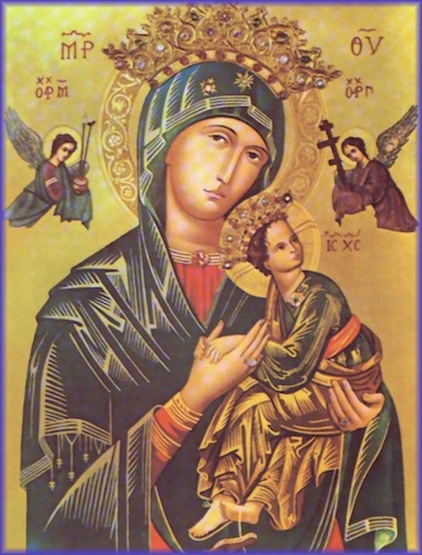
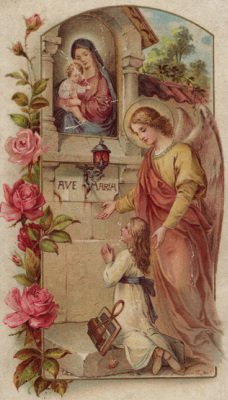
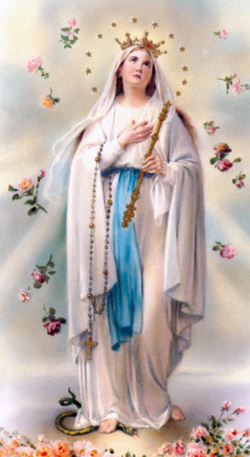
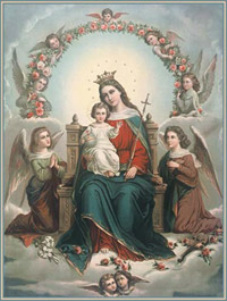
 RSS Feed
RSS Feed